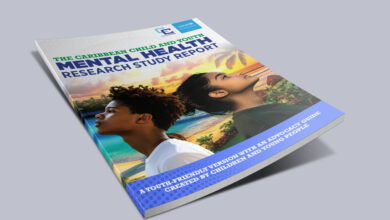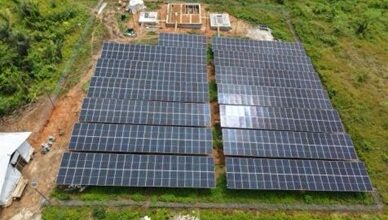Hon. Prime Minister
Hon. Michael Shree Chan, Acting Minister of Finance
Mr. Eudoxie, Chairman of the Caribbean Association of Indigenous Banks
Distinguished Guests
Delegates
Members of Diplomatic Corps
Ladies and Gentlemen
The current global financial crisis which has so far spanned South East Asia, Russia and Latin America, is having far-reaching consequences, not only on the countries directly involved, but also on the prospects for global economic growth and on international financial markets. A number of views has been expressed as you will expect regarding the causes of, and remedies for, the crisis and large amounts of funds have been spent by the multinational financial institutions, most notably the IMF and the World Bank, in an effort to rescue the economies affected. The recent (i.e. October 1998) Bank/Fund meetings in Washington gave priority consideration to this issue and the US Congress has only recently increased the IMF resources by some 18 billion dollars to help that institution come to grips with the support which countries need to deal with the problem.
The crisis can be said to be in large measure a negative outcome of the globalisation of the world economy, particularly of its monetary and capital markets. The magnitude of the crisis bears close relationship to the volume and nature of the capital flows that move around in the international economy. It is estimated that in 1997, private capital inflows to emerging markets alone were, according to Claudio Loser, a Director of the IMF, of the order of some “US$235 billion, more than five times the figure of 1990 and between ten to fifteen times that of the mid-1980s”. As regard the nature of these flows, the concern is with the short-term and volatile portfolio investment and not the private foreign direct investment which is of a more long-term nature.
The massive flow of such portfolio investments into the affected emerging markets was closely linked to the following factors:
- first, perceptions of macroeconomic stability and sustained economic growth in the South/East Asian Region;
- removal of restrictions on overseas investment by institutional investors in the developed economies;
- the elimination of capital controls by developing countries; and
- and technological progress in telecommunications.
All these taken against a background of low interest rates in the developed economies and a desire for greater portfolio diversification which by itself led investors to search for new markets.
The larger the volume of such capital flows, the greater the potential volatility of financial markets and the larger the potential bail-out requirements which these conditions are likely to call for. The recent (1997) bail-out of the Asian economies, for example, was unprecedented in history, in US dollars, 17 billion for Thailand, 57 billion for South Korea and 43 billion for Indonesia, that is, 117 billion for these three countries alone.
It is curious that the South East Asian economies in which this phenomenon first emerged, were before that juncture, considered to be models in development strategy and success stories worthy of emulation, with high real growth rates, significant improvements in living standards and major reductions in levels of poverty. The consistent experience of high real growth rates, resulted in these economies being attractive poles for more capital inflows and thus developing a process of success feeding on itself.
Of course, we have found out that this process of high real growth rates and the large capital inflows did not happen by chance. The earlier processes of structural changes and macro economic stabilisation undertaken by these countries, had set the foundation. But large global capital movements do not on their own necessarily lead to generate the kind of crisis the world is now experiencing. National domestic policies are a major contributing factor. The achievements of the South East Asian economies masked certain critical points of weakness in their economic policy and institutional framework. These included heavy reliance on massive short-term capital inflows, leading to increases in money supply, and in bank lending – much of it unsound due to poor bank supervision, artificial currency appreciation, resultant slowing export growth and widening external current account deficits.
The excessive exposure to foreign exchange risk which such a situation implies, carries with it the danger of sudden massive capital movements out of such economies with all the attendant implications such currency depreciation/devaluation, loss of investor confidence, weakened financial systems and softening external demand. Guillermo Ortiz Martinez writing in the June 1998 issue of Finance and Development draws our attention to the fact that: (I quote)
“The similarities between the Mexican crisis and the recent financial crisis in some Asian economies are striking. What stands out are the problems of economic policy management faced by emerging nations in a world of highly mobile capital . . .. “In both cases”, he pointed out, “the capital inflows contributed to a very pronounced expansion of aggregate demand, a considerable increase in stock and real estate prices, accelerated growth of bank assets and a sizeable external current account deficit.”
The current crisis phenomenon which initially spread from Thailand to Indonesia, to The Phillippines and then on to Korea, exploited certain common critical weaknesses in these economies. But it has also shown itself, however, to be a phenomenon which affects developing and developed economies alike in a context of global financial integration and economic interdependence. Thus it is that Japan, Russia, Brazil and even the economy of the mighty United States have all been affected in varying degrees.
The entire international economy, including emerging markets, transition economies and the developed markets alike, is now in a phase of extreme turmoil. It is generally recognised that while globalisation brings significant benefits, not only are those benefits inequitably distributed, but the globalisation process itself brings with it, major risks. It is this appreciation of the global nature of the phenomenon that has prompted the G7 countries and the International Financial Institutions to place this issue at the top of their international economic and financial cooperation agenda. Now what does all this mean for the countries of CARICOM?
Some Implications for CARICOM Economies
The global nature of the phenomenon suggests that the economies of CARICOM countries cannot expect to remain untouched by this phenomenon. The direct impact on them can be expected to be felt in a number of ways starting with depressed conditions as a result of falling global demand in the commodity markets in which they sell their commodity exports.
In the case of manufactured exports, CARICOM countries can expect increased competition from lower-priced Asian output resulting from their currency depreciations/devaluations as well as from lower overall global demand.
Also, a continuing sluggish world economy can result in a slowing down in the tourism sector due to a fall in tourist arrivals in the Region.
Finally, the crisis has resulted in a changed climate for emerging economies in the international financial markets. Developing country borrowers must now expect to be faced with demands for higher spreads on bond issues and this is likely to lead to a decline in bond placements. Any forays into the international capital/ financial market at this time will therefore most likely be at increased cost.
According to the IMF Director Claudio Loser, so far for example, in the Caribbean the commodity markets has hit oil prices which have declined by over one-third since this time last year. Over the same period methanol prices have fallen by about one-half, ammonia prices by about one-quarter and urea by about ten percent. All these have hit Trinidad and Tobago with a loss estimated at somewhere around 2 percent of its Gross Domestic Product. Guyana and Jamaica will also have experienced losses in bauxite and related exports.
In the case of the Region’s fledgling capital market, there were no significant short-term capital outflows to take place in the wake of the crisis. In fact, the fledgling nature of the Region’s capital market may well have proven to be something of a blessing in this situation. However, it is likely that those CARICOM countries which are “in the market” will most likely postpone activities there for a while due to the unfortunate climate existing at the moment. On a more positive note, this situation may result in CARICOM States making more regional placements, thereby strengthening the development of the regional capital market. In this regard, there has been for example, a recent bond placement in the Trinidad and Tobago market by the Government of Belize; and soon there will be another when another Member State goes to market in that Member State as well.
While not overwhelmingly affected so far, the economies of the Region are, however, as Prime Minister Arthur of Barbados reportedly said recently of his country’s economy, “not yet out of the woods”. Thanks to past policy initiatives which have seen recently a significant lowering of fiscal deficits and inflation rates, and fairly strong balance of payments positions, and manageable debt situations resulting in adequate real GDP growth rates over the last three years, the Region was not in the worst shape to protect itself from the contagion of the crisis. Unfortunately the recent spate of natural disasters – hurricanes especially, has somewhat weakened the Region’s economies, especially those of St. Kitts and Nevis and Antigua and Barbuda, not to mention Haiti and the Dominican Republic.
The vulnerability of the Region which this phenomenon of annual natural potential disasters emphasises, necessitates a higher degree of support and guarantee for regional well-being than would otherwise have been the case or than would be suggested by the level of per capita income.
What steps will the Region need to take to deal with this globally adverse economic and financial situation? To respond to this situation the Bureau of the Conference of Heads of Government at its recent meeting in Grenada (October 21) called on the Council of Finance and Planning (COFAP), comprising the Ministers of Finance of the Region, to meet without much delay to discuss and propose policy measures for consideration by CARICOM Heads of Government at their upcoming Tenth Inter-Sessional Meeting in Suriname at the beginning of March 1999, hopefully to “get us out of the woods and keep us out of the woods”.
In pursuing this task, the COFAP could well be assisted by paying attention to certain lessons which the Asian initiated crisis has so far taught us. One such lesson relates to the danger of over-reliance on market forces and market participants for determining the direction of economic policy. These can be given to disruptive, herd-instinct behaviour, at times, to the detriment of national welfare.
Another lesson relates to the importance of taking steps to generate greater domestic savings to help finance domestic investment. Yet another relates to regional cooperation arrangements which can play an important “mezzanine role” between national and international institutions as regards crisis prevention and management. A further lesson relates to the need to strengthen domestic financial systems as the process of liberalisation of the financial sector takes place and in that process to improve the surveillance of domestic financial systems, so as to help identify financial sector problems well before they become crises and certainly before they become international crises.
A particularly vital lesson has to be the need for the international financial institutions to have the capacity to activate timely, large and credible injections of official liquidity into the early stages of a crisis so as to head it off.
Finally, the entire international financial governing structure the so-called financial institution needs to be reviewed and redesigned so that through proper management of the globalisation process, its benefits can be captured and its inherent risks minimised.
As one firmly wedded to the philosophy of regionalism, I cannot stress too strongly the importance of a regional approach to determining our response to this phenomenon. Without doubt CARICOM States will all need to accelerate the process of improving the competitiveness and diversification of their production and exports, strengthening their domestic financial systems and increasing their reliance on domestic savings and the regional financial market as sources of investment capital for regional investment and development.
There is therefore a lot of work ahead of us and this Conference, I am sure, will help to give some pointers as to where we go, how we go, and, particularly, who does what. It is a time for collective regional action of the sort that this Conference is undertaking and for that, it receives the Community’s and my own personal blessings and best wishes for success.





